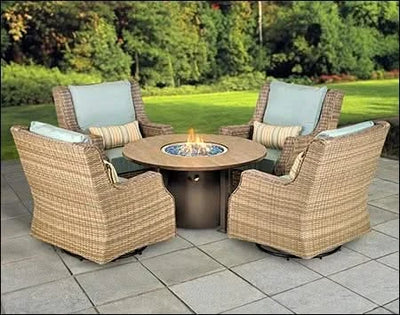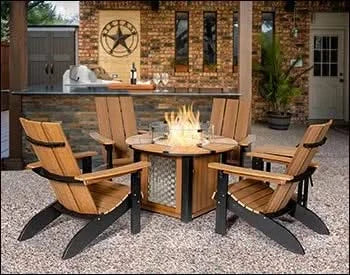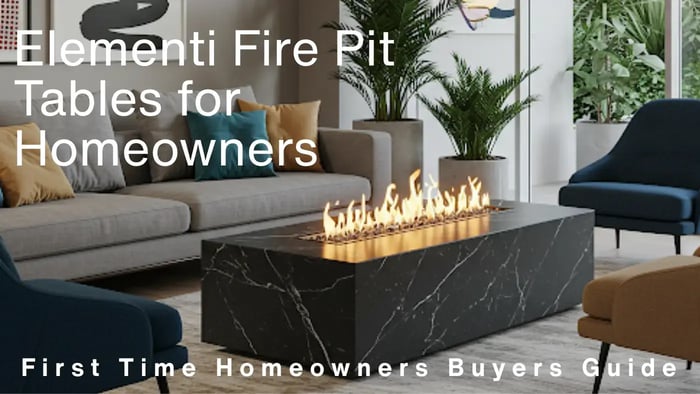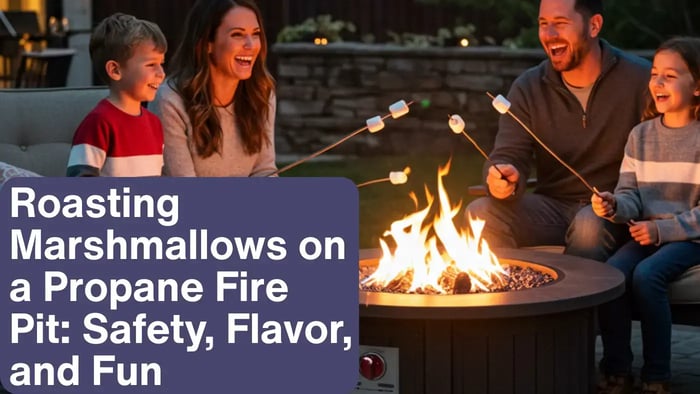The desire to extend our outdoor living spaces is a siren song, especially in the lush landscapes of the Pacific Northwest. Imagine a tranquil fire pit gazebo; a sheltered haven where the warmth and crackling aroma of a wood-burning fire pit defy the persistent drizzle.
This vision, however, presents a unique Pacific Northwest design challenge: effectively managing smoke ventilation within your fire pit gazebo while ensuring robust protection against our signature rain.
For those considering this appealing combination of a gazebo with a fire pit, a thoughtfully designed roof is paramount. The core issue lies in creating an outdoor structure that harmoniously balances shelter from rain with the necessary airflow for safe and enjoyable use of a wood-burning fire pit.
This blog post aims to provide clarity and guidance in navigating these design considerations. We will explore various roof design options suitable for a gazebo intended to house a wood-burning fire pit in a rainy climate. We will also outline the principles and factors that contribute to both functionality and safety.
Our goal is to equip you with the knowledge to make informed decisions and ultimately create a serene and well-designed outdoor haven. Let us proceed with a considered exploration of these important aspects.
Table of Contents
What Are the Fundamental Requirements for Your Fire Pit Gazebo Project?
In regions characterized by frequent precipitation, such as the Pacific Northwest, the need for a reliable outdoor shelter is paramount. Before considering specific roof designs, it's essential to understand the core functions your gazebo must serve.
How to tell is a Gazebo is worth your investment?
Protection from Rain: The Primary Function in the PNW
For those of yous in the Pacific Northwest, rain isn't an occasional visitor; it's often a long-term resident. Therefore, the primary function of your gazebo must be to provide substantial and reliable protection from the elements. This influences:
- Material choices
- Roof slope
- Overall structural design
These factors will dictate how well your gazebo stands and battles outdoor elements. A leaky gazebo defeats its very purpose in this climate.
Effective Smoke Ventilation: Crucial for Safety and Comfort with a Wood-Burning Fire Pit
Introducing a wood-burning fire pit into the equation adds a critical safety and comfort consideration: smoke ventilation. Without a well-designed system, smoke can become trapped, creating an unpleasant and potentially hazardous environment. This necessitates careful planning of the roof structure to allow for the efficient and safe escape of smoke.
Design Aesthetics: Balancing Functionality with the Desired Look and Feel
While functionality is key, the visual appeal of your gazebo shouldn't be an afterthought. The design aesthetics should complement your existing outdoor space and reflect your personal style. The roof design, in particular, plays a significant role in the overall look and feel of the structure. Finding a balance between effective smoke ventilation and an attractive design is a crucial requirement.
Potential Building Codes/Regulations: Understanding Local Rules
Finally, before you even break ground, it's vital to consider any potential building codes and regulations in your local area. Rules regarding open flames, setbacks, and structural requirements can significantly impact your design choices. A little research upfront can save you considerable trouble and expense down the line.
Exploring Roof Design Options for Smoke Ventilation
Alright, let's dive into the exciting part – the actual solutions! You've thoughtfully considered the fundamental needs of your gazebo with a fire pit. Especially when navigating the delightful downpours of the Pacific Northwest while keeping the smoke at bay. Now, the core design hurdle: what roof design will effectively manage smoke from your fire pit while providing reliable shelter for your outdoor space?
What better way is there to know this other than trying it for yourself? We’re in luck because there’s a very helpful Redditor who chimed in with their tried and tested experience. Their experience offers a fantastic starting point, and we're going to kick things off by taking a closer look at their suggestion, a design that has stood the test of time (and likely quite a few rainy seasons!).
A. The Flue and Hood Design
This approach, which resonated with our original poster, directly tackles the smoke issue with a dedicated pathway. Imagine a miniature chimney, or flue, extending straight up through the roof of your gazebo, positioned right over your fire pit. It's a direct route for that smoky air to escape, much like the chimney on your house.
Topping this flue off is usually a tapered cone or hood. Think of it as a clever hat for your chimney. Its purpose is two-fold: first, the tapered shape helps to direct the rising smoke upwards and out into the open air.
Second, and crucially for our rainy climate friends, the overhang of the cone acts as a shield, preventing rainwater from directly entering the flue and potentially dousing your fire or creating a messy situation.
What are the upsides of this design?
Well, for starters, it offers direct and potentially very effective smoke removal. By creating a dedicated channel, you're giving the smoke the most straightforward path out, which can be particularly beneficial for larger fires or less-than-ideal wind conditions.
However, like any design, there are con. One potential con is that a prominent flue can impact the open feel of the gazebo. Depending on its size and placement, it might obstruct the view or create a more enclosed atmosphere than some might prefer.
Another point to consider is the potential for heat buildup near the flue. You'll want to ensure you're using appropriate, heat-resistant materials around the opening. Finally, the construction of a proper flue and hood system might introduce a degree of design complexity compared to a simple open roof.
So, the flue and hood design is a tried-and-true method, offering a focused solution to smoke ventilation. But it's just the beginning of our exploration. Let's move on to other potential roof designs that might better suit your specific needs and aesthetic preferences.
The Open Roof with a Raised Overhang
For those who cherish the feeling of an open-air gazebo while still seeking a degree of protection from the elements, the open roof with a raised overhang presents an intriguing solution. This design strategically leaves a section of the roof directly above your fire pit completely open, allowing smoke to naturally rise and dissipate. The clever addition? A smaller, raised roof structure positioned above this opening, acting like a built-in umbrella to deflect direct rainfall.
How It Vents Smoke: Letting Nature Take Its Course
The beauty of this design lies in its simplicity when it comes to smoke management. Relying on the natural buoyancy of hot air and smoke, the open section provides a direct and unobstructed pathway for combustion byproducts to escape upwards. As the fire burns, the smoke rises and exits freely into the open air, minimizing its accumulation within the gazebo.
The Upsides: Openness and Simplicity
One of the most significant advantages of this approach is its ability to maintain a more open and airier feel within your gazebo. Unlike fully enclosed roof designs, this option preserves a stronger connection with the surrounding environment.
Furthermore, the construction can be potentially simpler compared to more intricate flue or vented roof systems, potentially translating to lower build costs and easier installation.
The Downsides: A Wary Eye on the Weather
However, this design isn't without its limitations. Smoke control can be less effective, particularly in windy conditions. Crosswinds can easily disrupt the natural upward flow of smoke, potentially pushing it back down into the gazebo.
Additionally, despite the raised overhang, there's still a potential for some rain to enter the open area, especially during heavy downpours or angled rain. While the overhang aims to mitigate this, it won't offer the complete protection of a solid roof.
Key Considerations for the Overhang Design
The effectiveness of this design hinges heavily on the thoughtful execution of the raised overhang.
Several factors come into play:
- Size: The overhang needs to be sufficiently large to effectively shield the open area from direct rain. Consider the prevailing wind and rain directions in your location when determining its optimal dimensions.
- Angle: The angle of the raised roof will influence how effectively it deflects rainwater. A steeper angle will generally offer better runoff.
- Material: The material of the overhang should be durable and weather-resistant, capable of withstanding the elements. Consider materials that complement the main gazebo roof and offer good water runoff properties.
The open roof with a raised overhang offers a compelling balance between open-air enjoyment and basic weather protection. However, its effectiveness in managing smoke and rain is inherently tied to the local climate and the careful design of its key feature – the raised overhang.
The Open Roof with a Raised Overhang
Building upon the concept of an open roof and raised overhang, an even more sophisticated approach introduces the element of flexibility through louvered or adjustable roof sections.
Imagine portions of the roof directly above your fire pit that can be opened, tilted, or even fully retracted to create a customizable ventilation pathway for smoke, while still offering the ability to close them for enhanced weather protection when the fire isn't in use.
How It Vents Smoke: Ventilation on Demand
The beauty of this design lies in its dynamic nature. When you're enjoying a fire, these adjustable sections can be opened, providing a direct escape route for rising smoke, like the simpler open roof design.
The key advantage here is control. You can potentially adjust the degree of opening based on the intensity of the fire and the prevailing wind conditions, optimizing smoke dispersal.
The Upsides: The Best of Both Worlds
This approach offers a compelling blend of benefits:
- Flexibility for Ventilation: Open the louvers or retract the sections fully for maximum smoke evacuation during a fire.
- Enhanced Weather Protection: When the fire is out, these sections can be closed, offering a more substantial barrier against rain, wind, and even sun compared to a permanently open roof.
- Potentially Better Smoke Control: The ability to adjust the opening can offer more nuanced control over smoke flow compared to a fixed opening, especially in variable wind conditions.
The Downsides: Complexity and Careful Consideration
However, this added functionality comes with its own set of challenges:
- More Complex Mechanism: Implementing louvered or adjustable roof sections necessitates a more intricate mechanical system involving hinges, motors (for automated systems), or manual cranks. This increases the complexity of the design and construction.
- Potential for Leaks: Any moving parts in a roof introduce potential points for water ingress if not meticulously designed, sealed, and maintained. High-quality, weather-resistant materials and precise engineering are crucial.
- Cost: The increased complexity of the mechanism and the need for durable, weather-resistant components will inevitably lead to a higher initial cost compared to simpler open roof designs.
- Maintenance: Moving parts require regular maintenance to ensure smooth operation and prevent issues like rust, sticking, or misalignment that could compromise both ventilation and weather protection.
Key Considerations for Louvered or Adjustable Roof Sections:
Successfully integrating adjustable roof sections requires careful attention to several factors:
- Mechanism Durability: The chosen mechanism must be robust enough to withstand repeated use and exposure to the elements. Consider the materials and the quality of the hardware.
- Weather Sealing: Exceptional attention must be paid to sealing the adjustable sections when closed to prevent leaks. High-quality gaskets and overlapping designs are essential.
- Ease of Operation: The system should be easy and intuitive to open and close, whether manually or automatically.
- Material Compatibility: The materials used for the adjustable sections should be compatible with the main roof and able to withstand temperature fluctuations and exposure to smoke.
- Integration with Overhang Design: The adjustable sections should seamlessly integrate with the raised overhang to ensure that when open, smoke is still directed upwards and outwards, and when closed, the overhang provides additional rain protection.
The open roof with louvered or adjustable sections represents a premium solution for those seeking maximum control over both smoke ventilation and weather protection in their gazebo.
While it offers significant advantages in terms of flexibility, the increased complexity, potential for leaks, and higher cost necessitate careful planning, quality materials, and diligent maintenance to ensure its long-term effectiveness and enjoyment.
Hybrid Approaches: The Best of Multiple Worlds
Why limit yourself to a single solution? Often, the most effective smoke ventilation for your gazebo fire pit comes from strategically combining elements of the designs we've explored. These hybrid approaches allow you to tailor a system that addresses your specific needs and the unique characteristics of your outdoor space.
Imagine this: Instead of a fully open roof, consider a partially open section directly above the fire pit, coupled with a smaller, strategically placed flue extending through a more solid portion of the roof. This combination could offer the direct upward venting of a flue for concentrated smoke, while the partial opening provides additional natural airflow and reduces the feeling of being entirely enclosed.
Another hybrid could involve the open roof with a raised overhang, further enhanced by small, strategically positioned vents or even a subtle cupola. This layered approach could leverage the natural rise of smoke through the opening, while the vents or cupola provide additional pathways for dispersal and potentially mitigate the impact of crosswinds.
The beauty of hybrid designs lies in their adaptability. You can fine-tune the balance between openness, direct venting, and weather protection. For instance, if you prioritize a more open feel but experience occasional issues with smoke lingering, a smaller, less obtrusive flue integrated into the design might be the perfect compromise.
Key Considerations for Your Design (Applying to All Options):
Regardless of whether you choose a single design or a hybrid approach, several crucial factors will influence the effectiveness and safety of your smoke ventilation system:
- Fire Pit Size and Smoke Output: This is a fundamental starting point. A larger fire, naturally, will produce more smoke, demanding a more robust and efficient ventilation solution. Consider the typical size and intensity of your fires when planning.
- Prevailing Wind Direction: Observe the dominant wind patterns in your yard. Designing your open roof section or flue exit to take advantage of natural airflow can significantly enhance smoke dispersal and prevent it from being pushed back into the gazebo.
- Material Choices: The materials you select for your roof and any ventilation components are critical for both longevity and safety. Opt for weather-resistant options that can withstand the elements. Crucially, pay close attention to heat resistance in the immediate vicinity of the fire pit and any venting structures passing through the roof.
- Height of the Gazebo and Roof: A taller gazebo with a higher roof can naturally aid in smoke dispersal as it has more vertical distance to rise and dissipate. Consider the existing height of your structure when evaluating ventilation options.
- Safety Precautions: Safety must be paramount. Maintain a safe distance between the fire pit and any part of the roof structure, especially combustible materials. Utilize non-flammable materials for any components directly above or near the fire. Ensure any modifications to the gazebo's structure are sound and stable.
- Aesthetics: Finally, consider how your chosen roof design and ventilation elements integrate with the overall style and aesthetic of your gazebo and outdoor space. The solution should be functional without being an eyesore, enhancing rather than detracting from your enjoyment.
By carefully considering these key factors and exploring the potential of hybrid designs, you can create a smoke ventilation system that not only keeps your gazebo comfortable and safe but also complements its unique character.
A Ventilation Guide for Wood-Burning Fire Pits
Despite the delightful downpours that characterize regions like the Pacific Northwest, the dream of a functional and enjoyable gazebo featuring a cozy fire pit is absolutely achievable.
By thoughtfully considering your roof design and implementing a strategic smoke ventilation solution, you can effectively manage both the elements and the enjoyable byproduct of a crackling wood-burning fire.
This guide has primarily focused on ventilation strategies and tips and tricks specifically tailored for wood-burning fire pits within a gazebo. Due to the nature of wood combustion, generating significant smoke and particulate matter, careful attention to airflow and extraction is crucial for both comfort and safety under a covered structure.
However, it's important to note that the challenges and risks associated with ventilation may be significantly reduced when considering an outdoor gas or propane fire pit. These fuel sources burn much cleaner, producing minimal smoke.
If you are open to the convenience and cleaner combustion of gas or propane fire pits, placing a gazebo over such a unit would generally pose a considerably lower risk related to smoke inhalation and the need for extensive ventilation.
While some airflow is still recommended for overall comfort and to dissipate heat, the stringent ventilation requirements discussed for wood-burning options often become less critical with gas or propane.
Ultimately, whether you opt for the direct extraction of a flue and hood, the natural openness of a vented roof, the adaptable nature of louvered sections, or a clever hybrid approach (primarily geared towards wood-burning), the key lies in understanding your specific needs, the characteristics of your gazebo, and the prevailing environmental conditions of the Pacific Northwest.
For further insights into the general safety of having a fire pit under a gazebo, we encourage you to read our article: "Is it safe to have a fire pit under a gazebo?"
With careful planning, the selection of appropriate materials, and a focus on safety, your gazebo can become a year-round haven – a warm and inviting space where you can gather around the fire, sheltered from the rain, and breathe easy. The possibilities are there to transform your outdoor structure into the perfect all-weather retreat, keeping in mind that the choice of fuel for your fire pit will significantly influence the complexity and necessity of your ventilation design.






